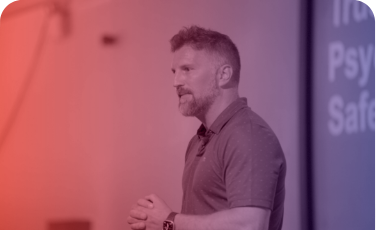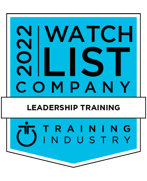10 Years In: 10 Lessons from Building a Leadership Company That Beat the Odds

We’re still here.
That sentence carries more weight than ever.
In an industry where fewer than 40% of service-based businesses survive a decade and less than 5% of leadership development firms ever reach $5 million in revenue, we’re building the infrastructure to be in that top tier—not just survive but scale.
DX Learning didn’t just make it. We grew. We evolved. We earned our scars.
And we did it not by chasing every trend or over-engineering every moment, but by returning to one core belief again and again: people-first leadership.
Here are the 10 most powerful lessons we’ve learned from building a people-first movement that survived—and is stronger, clearer, and more committed to the mission than ever.
1. Survival is success—but only if you evolve.
You don’t survive 10 years in this business by standing still. Reinvention is not a season—it’s a cycle.
When we launched DX in 2015, we were laser-focused on becoming the world's best leadership simulation company. We started with one product, added a second, and I was a happy solopreneur. But something began to shift. The most effective form of marketing is to produce exceptional work. We did, and we grew.
Over the next decade, we transformed—sometimes gracefully, sometimes painfully—from simulation experts to:
- Experiential learning pioneers
- Champions of self-awareness
- The go-to psychological safety firm
- Aspiring learning empire
Now, we are a boutique, high-impact culture and leadership consultancy built on differentiation through high-quality work, customer intimacy, and trust through delivering more than expected.
We scaled up. We scaled back. We learned, pivoted, reset, and refined. Change was hard—for the team, for the business, and for me and my family.
But we made it through because we kept explaining the why. And we landed in a place that feels true: clear on who we are, who we serve, and what we stand for.
2. Culture isn't just strategy—it's your brand in action.
“Culture is a mirror of leadership.”
If we want to build better cultures for our clients, we must first do it for ourselves. And that meant looking in the mirror—honestly.
At one point, our old values were enabling toxic behaviors. I could see it in the results. I could feel it myself. I was becoming someone I swore I’d never be—a leader driven by pressure instead of purpose.
We wiped the slate clean and adopted values that now guide everything: Hungry, Humble, and Curious, inspired by Patrick Lencioni’s book, The Ideal Team Player.
When values are alive, not laminated, they drive culture. When culture is aligned, performance follows.
3. The CARE Equation isn't just theory; it's survival gear.
Clarity, Autonomy, Relationship, and Equity®.
CARE gave us our compass. It became more than a model—it became our internal language, our operating system, and our differentiator.
In a saturated market, CARE helps us stand out. More importantly, it helps us stay grounded in what matters most: creating high-trust and high-performing environments where people genuinely want to show up and do their best work.
If you don’t have a unique philosophy or framework that’s rooted in truth, you’re just another voice in the noise.
4. Vulnerability scales trust—and trust scales impact.
It took me 44 years to realize that vulnerability isn’t weakness, it’s the fuel for leadership.
When I finally opened up about my burnout, my team didn’t lose faith. They got it. One of them even said, “I thought you were a machine.”
That hit hard. And it reminded me: If I’m not showing up as a human, how can I expect anyone else to?
Authenticity isn't a perk. It’s a requirement.
5. Mistakes are just tuition payments for wisdom.
We’ve paid our fair share.
Hiring without role clarity, setting goals without metrics, and leading with emotion instead of structure. You name it, and we’ve stumbled over it.
But 2024 was the turning point. We implemented a real operating system with real KPIs, dashboards, and feedback loops. Now, we make better decisions faster and smarter.
Mistakes don’t mean you’re failing. They tell you you’re learning. I’m lucky to have a team that loves to learn with me.
6. Your worst days will often lead to your best ones.
In 2022, I let go of five team members—four in one day.
It broke me.
We had chased growth for the wrong reasons: ego, comparison, ambition. I became a version of Alex I didn’t even recognize.
That pain forced me to reconnect with our core. And it made me and the team more intentional, more human, and more committed to doing this work the right way.
7. Empathy has a limit.
Empathy isn’t optional; it’s oxygen. It’s how trust breathes. But here’s the truth: you can run out.
I’ve overextended. I’ve burned out. I’ve offered too much compassion without enough boundaries.
As leaders, we give a lot, but we’re still human. Empathy without reciprocity can become a form of “dark empathy.”
Give generously. But protect your oxygen mask, too.
8. What you tolerate becomes your culture.
I’ve tolerated ego because it came wrapped in performance. I’ve looked past gossip because I didn’t want to rock the boat.
Never again.
If you tolerate toxicity, you normalize it. If you let values slide, they become optional.
The most challenging aspect of leadership is maintaining a firm stance. The most important part is doing it despite the challenge.
9. Leadership isn't natural; it's learned.
No one is born to do this perfectly.
Leadership is messy. It’s humbling. It’s a continuous loop of learning, messing up, apologizing, and growing.
I’ve made every mistake in the leadership playbook and then made a few more. But I’m still here, still learning, still showing up.
And that’s the point.
10. Clarity is kindness—and a growth multiplier.
I don’t need much clarity. I love autonomy. So, I assumed everyone else did, too.
Wrong.
Some of my most significant leadership failures came from projecting my preferences onto others. Once I realized that, everything changed.
Now, I build teams with cognitive diversity. People who balance me. People who aren’t like me.
Want to grow? Start by giving people what they need to thrive—not what you prefer to give.
We didn’t just build a business—we built a movement.
A movement that believes:
- Leadership is about people, not power.
- Culture is shaped by what you tolerate.
- Trust starts with truth.
- Great leaders aren’t born—they’re built.
Thank you to every client, team member, partner, and leader who believed in us, pushed us, and grew with us.
Here’s to the next 10 years. We’ve been building the people-first movement, now it’s time for us to lead it.
To unlearning. Rebuilding. Getting better. And creating workplaces that actually work—for humans.
With gratitude and fire,
Alex Draper
Insights

Subscribe to Our Monthly Newsletter!
For managers and talent professionals who truly believe in putting people first, the CARE to Win blog is your gateway to the latest insights on human-centric leadership. Join us as we champion the people first movement.
Need some time apart? Are we emailing you too often? Just give us your feedback, and we promise we’ll respond. We really do care. And if it’s still too much, just unsubscribe. It’s cool.
.jpg) Alex Draper
Alex Draper


